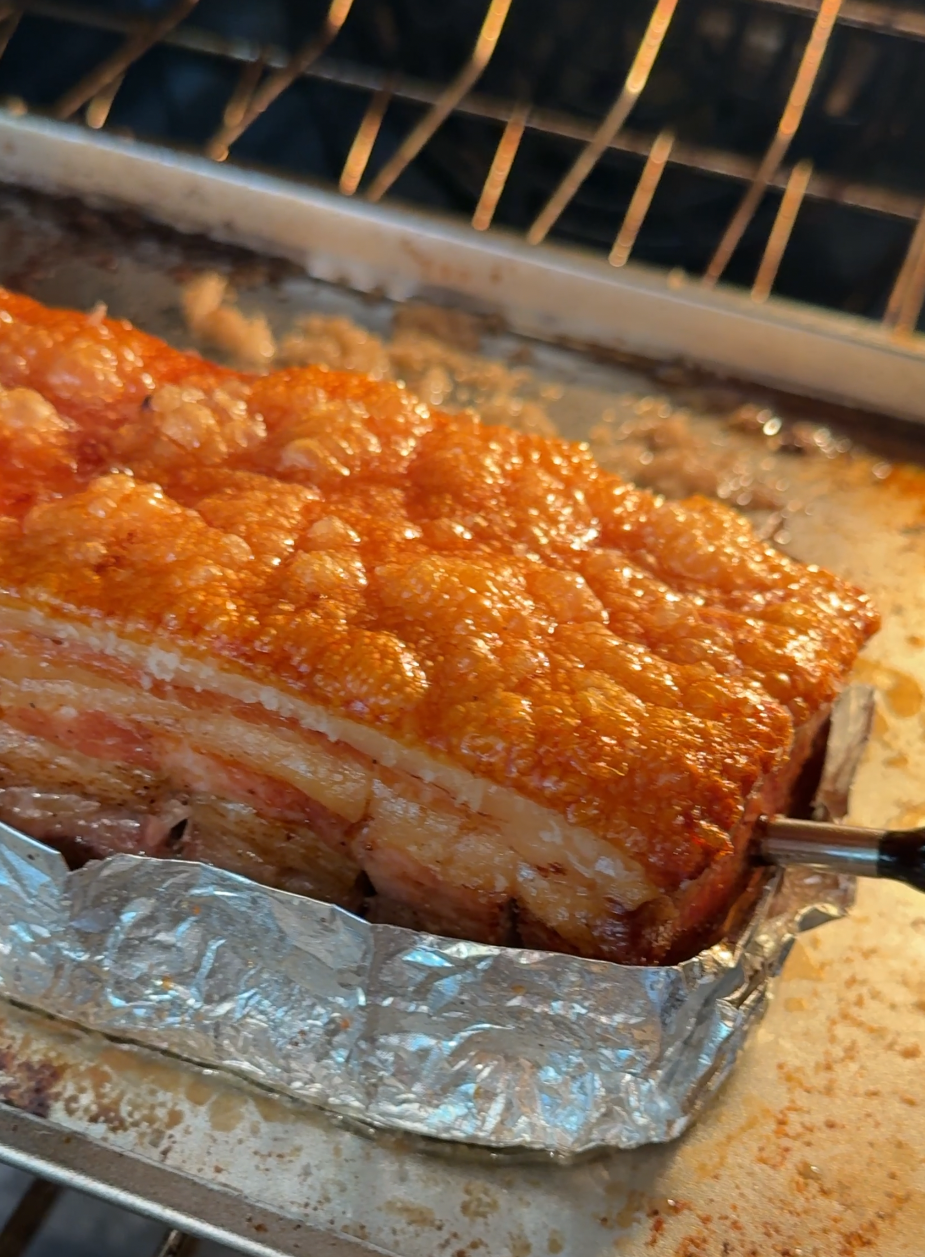Vietnamese Crispy Roasted Pork Belly (Thịt Quay)
Crispy, juicy, and oh so addictive — nothing beats Vietnamese roasted pork belly aka thịt quay. 🐷🔥
🧧 A Dish Rooted in History: From Chinese Siu Yuk to Vietnamese Thịt Quay
Like much of Vietnam’s culinary landscape, thịt quay carries with it centuries of cultural blending. Its origins trace back to southern Chinese cooking, particularly Cantonese-style roast pork belly, known as “siu yuk.”
When Chinese communities migrated and settled across Vietnam — especially in Saigon and the southern regions — they brought with them this iconic preparation: a method of roasting pork until the meat is tender, the fat is rendered, and the skin transforms into a glassy, shattering crust.
Over time, Vietnamese cooks began adapting it — infusing local spices, marinades, and sauces to make it uniquely their own. While siu yuk often relies on five-spice powder, sugar, and rice wine, Vietnamese thịt quay tends to incorporate Maggi sauce and hoisin for a deeper umami note and caramel sweetness. The results? A dish that bridges two culinary worlds — the precise roasting technique of southern China and the layered, aromatic flavor base that defines Vietnamese home cooking.
In central and northern Vietnam, thịt quay often appears during Tết (Lunar New Year), family reunions, and temple offerings, symbolizing prosperity and abundance. In the south, it’s an everyday indulgence — folded into a crisp bánh mì, sliced thin over rice, or dipped into a simple sauce of lime, salt, and chili.
🍞 A Taste of Home: My Dad’s Version
When Dad and I were back in Vietnam, he’d make it a mission to find the perfect thịt quay vendor. He’d point out the skin’s even blistering and the nice ratio of fat to meat.
Back home, he recreated it with a few tweaks of his own — using rum, Maggi, and hoisin (his family’s recipe) to balance salt, fat, and sweetness. The result was every bit as good as the ones we found in Saigon — maybe even better, because it came out of our own oven.
🔥 Fail-Proof Tips for Perfect Thịt Quay
Dry skin = crisp skin. Even a little moisture can ruin the crunch.
Poke, don’t score. Tiny holes let steam escape — big cuts make the skin chewy.
Salt and vinegar are your friends. They pull moisture out and help blister the skin.
Two stages matter: low and slow to render fat, high heat to crisp.
Let it rest. Cutting too early lets steam soften the skin.
🧂 Dad’s Special Marinade (for the underside)
This is what gives the meat that classic reddish-brown hue, deep umami flavor, and subtle sweetness.
1 tbsp rum or vodka
1 tbsp hoisin sauce
2 tbsp Maggi or soy sauce
½ tsp Chinese BBQ powder (this gives that signature red color)
1 tsp honey
½ tbsp black pepper
¾ tsp Chinese five-spice powder
Mix everything together until smooth.
🔪 Step-by-Step Instructions
1️⃣ Prep the Pork Belly
Start with a slab of pork belly (about 2–3 lbs).
Scrape off any loose hairs, rinse, and pat it extremely dry.
Use a sharp skewer, meat poker, or corn holder to poke hundreds of tiny holes in the skin — this is the secret to that blistered, glassy crackle later on.
2️⃣ Marinate the Underside
Flip the belly skin-side down and score the meat side lightly (optional). Rub in your Dad’s marinade evenly on the underside only — keep the skin dry and clean. Slice into 2-inch-wide strips to help render fat evenly.
3️⃣ Dry Out the Skin
Foil the sides and bottom of each strip so the marinade stays trapped underneath. Brush the skin lightly with vinegar, sprinkle with salt, and place uncovered in the fridge for at least 24 hours (overnight minimum). This step lets the skin fully dry — the dryer, the crispier.
4️⃣ Low and Slow Roast
Preheat your oven to 300°F–325°F. Place pork belly on a rack set over a tray lined with foil (for easy cleanup). Roast for 1½ hours, until the meat is tender and the fat has mostly rendered.
(Tip: You can add a bit of water in the tray below to control temperature and prevent smoking.)
5️⃣ Blast the Skin
Remove the salt crust or wipe off any excess salt. Brush the skin once more with vinegar, then crank your oven up to 450°F (232°C). Roast for 20–30 minutes, or until the skin starts to bubble, blister, and turn golden.
Keep a close eye on it — once the skin starts puffing, it can go from perfect to burnt in seconds.
If the skin still needs a bit more crisping, switch to a low broil for a minute or two, watching it constantly. A short burst under the broiler will help it finish blistering evenly without burning.
6️⃣ Rest and Serve
Let the pork belly rest, uncovered, for about 10 minutes before slicing. Then chop it up into bite-size squares with a heavy knife or cleaver. You’ll hear that beautiful crack with every cut — that’s the hallmark of perfect thịt quay.
Serve warm with jasmine rice, pickled veggies, or stuffed into a fresh bánh mì with cucumber, cilantro, and a drizzle of Maggi.

